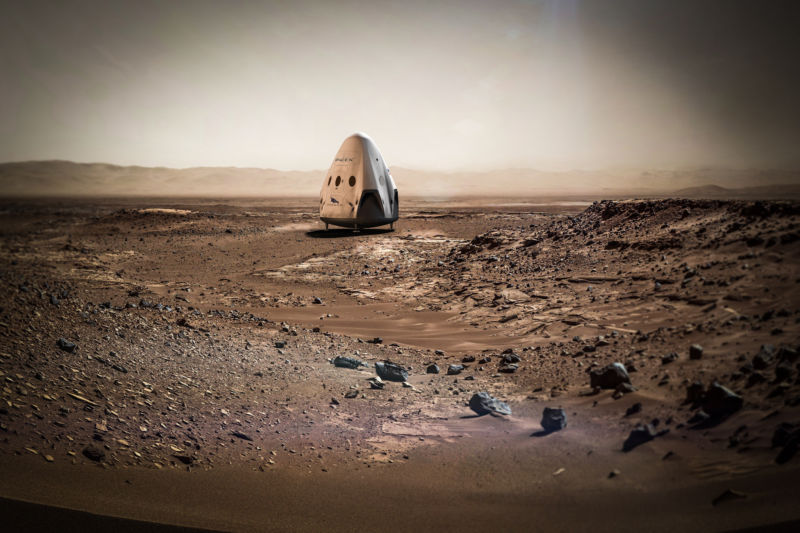
In recent months, SpaceX has acknowledged that it will not be able to launch an uncrewed Dragon spacecraft to Mars in 2018. The technology to send the capsule safely through deep space and propulsively land it on Mars just won't be ready. However, that delay opens up an opportunity to launch two Dragons in 2020. And that's what SpaceX appears likely to do.
NASA's manager of science missions, Jim Green, said on Tuesday that the 2020 launch window when Earth and Mars are in favorable alignment for relatively short transits is getting crowded. Speaking Tuesday at the Humans to Mars conference in Washington, DC, Green said, "Every 26 months, the highway to Mars opens up, and that highway is going to be packed. We start out at the top of that opportunity with a SpaceX launch of Red Dragon. That will be followed at the end of that opportunity with another Red Dragon. Those have been announced by SpaceX." NASA plans to launch a Mars lander in 2020 as well.
Two Red Dragon missions in 2020 have not yet formally been announced by SpaceX. Company spokesman John Taylor told Ars he would have to look into the question of sending two Dragons to Mars in 2020. However, other industry sources told Ars this is definitely under consideration by SpaceX, although no final decisions have been made.
Propulsive landing
In the past, SpaceX founder Elon Musk has spoken favorably about NASA's Mars Exploration Rover missions, Spirit and Opportunity, which landed four weeks apart in 2004 on Mars. The essential idea for Musk is to hedge his bets with two landings and potentially to learn from the first attempt to use experimental supersonic retropropulsion in the thin Martian atmosphere to slow the vehicle's descent.
Successfully landing a Dragon on Mars would be unprecedented. The spacecraft would likely enter the Martian atmosphere weighing about eight tons, and it would burn two of those tons as propellant to get down to the surface. Compare that to the largest object humans have ever landed on Mars, the Curiosity rover. Curiosity started off at 3.6 tons before entering the atmosphere, and through its sky crane and other steps, it shed weight down to 900kg by the time it reached the surface. Propulsive landing is key to eventual human missions to the red planet for one simple reason—it scales up to about 30 tons.
SpaceX hasn't talked openly about payloads on the Mars landers, but it's likely that the company will include some NASA instruments or experiments, and it may also issue an open call to universities for ideas. It's expected that any payloads will be related to technology and science needed to further human exploration of the red planet, which remains SpaceX's long-term goal.
reader comments
119